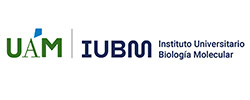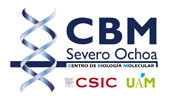Regulation of mRNA translation in eukaryotes and its implications for organismal life
Prof. Miguel Ángel Rodríguez Gabriel. Profesor Titular. Departamento de Biología Molecular. UAM.
Prof. Juan José Berlanga. Profesor Titular. Departamento de Biología Molecular. UAM.
Prof. Iván Ventoso Bande. Profesor Titular. Departamento de Biología Molecular. UAM.
Prof. Margarita Cabrera Solans. Profesora Permanente Laboral. Departamento de Biología Molecular. UAM.
We continue to investigate how eukaryotic systems (mammals, yeast and RNA viruses) regulate translation initiation at both global and message-specific manner, trying to identify new elements in ribosomes and mRNAs, and new initiation factor (eIFs) activities involved in the differential translation of mRNAs during cell proliferation and stress response. In the last two years, we further characterized the role of ES6S region of 40S ribosomal subunit in mRNA entry and ribosome scanning in different eukaryotic species (mammals, plants, insects and yeast). Our data suggest the ES6S region could be serving as a platform for the recruitment of RNA helicases (eIF4A and DDX3, among others) involved in RNA secondary structure unwinding. By using the nsp1 protein of SARS-CoV2 as a tool, we are also studying how the base composition of 5′ UTR and CDS regions shape translation and mRNA stability in human cells.
We continue to study how cells reprogramme translation during the stress response in yeast and mammals by modulating the activity of eIF2 and eIF2A factors, and the physiological impact of this response on cell and organismal adaptation, survival and aging. Thus, we recently found that preventing eIF2α phosphorylation not only impaired stress response, but also accelerated aging in yeast by a mechanism that involves proteostasis disruption. In this context, our research will focus on the study of key processes regulating proteostasis such as protein aggregation and autophagy and how they affect cell longevity.


